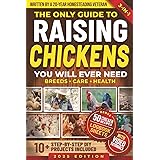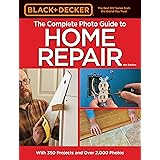Unlock Creativity: The Magic of DIY Toys for Kids’ Play and Development
The power of play in a child’s development is undeniable, serving as a critical foundation for learning, creativity, and essential life skills. The accompanying video above brilliantly showcases how effortlessly one can create a multitude of fun and simple DIY toys, transforming everyday household items into treasures that spark imagination. Far from being mere entertainment, homemade toys offer a unique blend of benefits that commercial alternatives often cannot match, supporting cognitive, social, emotional, and physical growth in profound ways. These creative projects not only provide engaging activities but also foster a deeper connection between children and their playthings.
Why Embrace Homemade Toys? Beyond Simple Fun
Opting for DIY toys extends beyond just providing a temporary distraction; it’s an investment in a child’s holistic development and a more sustainable lifestyle. Studies indicate that open-ended play, often facilitated by simpler, homemade toys, is paramount for fostering creativity and problem-solving skills. For instance, research published in the American Journal of Play highlights that children engaged with fewer, less prescriptive toys tend to develop stronger narrative skills and imaginative capacities.
Consider the economic aspect: families can save significant amounts of money annually by repurposing materials rather than constantly buying new toys. It’s estimated that the average family spends hundreds of dollars on toys each year, many of which are quickly outgrown or discarded. Furthermore, the environmental benefits are substantial. An alarming 80% of all toys eventually end up in landfills, contributing to plastic pollution. By utilizing materials like cardboard, fabric scraps, and plastic bottles, we actively participate in upcycling and reduce waste, teaching children valuable lessons about sustainability.
The sensory and developmental advantages are also key. Many DIY toys are inherently multi-sensory, providing varied textures, shapes, and sounds that stimulate a child’s developing senses. This is crucial for early brain development, as sensory play can improve cognitive function and fine motor skills by engaging multiple pathways simultaneously.
Easy DIY Toy Ideas to Spark Imagination
The beauty of crafting homemade toys lies in their simplicity and adaptability. You don’t need specialized tools or expensive supplies; often, the best materials are already in your recycling bin or craft drawer. Here are several categories of DIY toys that are both fun to make and incredibly beneficial for young minds, expanding on the concepts you might see demonstrated in the video:
Cardboard Creations: Building Worlds from Boxes
Cardboard boxes are perhaps the ultimate open-ended toy material. A large box can transform into a rocket ship, a car, a house, or a puppet theater. These projects encourage gross motor skills as children manipulate large pieces, and fine motor skills when they cut, tape, or decorate. According to developmental psychologists, imaginative play with simple props like cardboard structures is vital for narrative development and role-playing, crucial for social-emotional growth.
- **Cardboard Car/Rocket:** Cut out doors and windows, add paper plate wheels, and let children decorate.
- **Dollhouse/Castle:** Stack smaller boxes and connect them to create multi-level structures.
- **Post Office or Shop:** Designate sections, create small mailboxes or product displays, promoting literacy and numeracy.
Sensory Exploration: Engaging All the Senses
Sensory play is fundamental for learning, helping children to explore textures, sounds, and visual stimuli. Many homemade options excel in this area.
- **Sensory Bottles:** Fill clear plastic bottles with water, glitter, beads, small toys, and oil for mesmerizing visual and auditory experiences. Studies suggest sensory input can calm children and improve focus.
- **Homemade Playdough:** A simple recipe of flour, salt, water, oil, and food coloring provides endless tactile opportunities, strengthening hand muscles and fostering creativity.
- **Discovery Bins:** Fill a bin with rice, pasta, beans, or water, adding scoops, cups, and small toys. This encourages scooping, pouring, and imaginative play, beneficial for hand-eye coordination.
Crafty Companions: Bringing Fabric and Yarn to Life
Simple sewing or no-sew projects can result in adorable, cuddly companions or useful props for play.
- **Sock Puppets:** Old socks, buttons, and yarn can be quickly transformed into characters for storytelling and dramatic play. This boosts verbal skills and emotional expression.
- **Pompom Animals:** Yarn can be used to make colorful pompom creatures, requiring fine motor skill development for winding and cutting.
- **Felt Food:** Scraps of felt can be cut and lightly stitched (or glued) to create pretend food items for play kitchens, promoting imaginative scenarios.
Musical Instruments from Upcycled Materials
Introduce children to rhythm and sound exploration with instruments crafted from recycled goods. This is excellent for auditory development and early understanding of cause and effect.
- **Rice Shakers:** Fill small plastic bottles or toilet paper rolls (sealed with tape) with rice, beans, or pasta for different sounds.
- **Rubber Band Guitars:** Stretch rubber bands around an open tissue box to create a simple string instrument.
- **Drum Kits:** Invert various-sized pots, pans, or plastic containers for a makeshift drum set, encouraging rhythmic exploration.
Safety First: Important Considerations for DIY Toy Projects
While making your own toys, safety should always be a top priority. Unlike commercially produced toys which undergo rigorous testing, homemade items require thoughtful consideration to ensure they are safe for children, especially infants and toddlers who often explore with their mouths.
- **Age Appropriateness:** Ensure small parts (buttons, beads, googly eyes) are securely attached or avoided entirely for children under three to prevent choking hazards. A general rule: if it fits through a toilet paper roll, it’s a choking hazard for young children.
- **Non-Toxic Materials:** Always use child-safe paints, glues, and finishes. Opt for natural materials where possible.
- **Durability:** Ensure components are well-attached and the toy can withstand rough play without breaking into sharp or small pieces.
- **Supervision:** Especially during the creation process, supervise children when they are handling tools or materials. Always supervise play, particularly with new or less robust homemade toys.
- **Cleanliness:** Regularly clean DIY toys, especially those used by multiple children or likely to be mouthed.
Maximizing Play Value: Tips for Parents and Educators
To truly unlock the potential of DIY toys, consider how they can be integrated into a child’s daily routine and encourage different types of play. Children’s engagement often increases when they have a role in creating their toys.
- **Involve Children in the Making:** Let them choose colors, help with safe steps like gluing or cutting with child-safe scissors, or decorate the finished product. This fosters a sense of ownership and pride.
- **Encourage Open-Ended Play:** Avoid prescriptive instructions. Present the toy and let children discover its uses. A cardboard tube can be a telescope, a trumpet, a tunnel, or a sword.
- **Rotate Toys:** Keep a selection of DIY toys available and rotate them regularly to maintain interest and introduce novelty.
- **Create a Play Invitation:** Arrange toys in an inviting way with complementary materials (e.g., playdough with cookie cutters, blocks with small animal figures) to spark ideas.
- **Embrace Imperfection:** The goal is not a factory-perfect toy but a tool for play and creativity. Minor flaws add character and show the handmade effort.
The journey of creating and playing with DIY toys enriches children’s lives in countless ways, from boosting cognitive development to fostering an appreciation for sustainability. By dedicating time to these simple yet profound activities, we provide our children with opportunities for boundless imagination and skill-building that commercial toys often cannot replicate. These homemade treasures, whether a simple sock puppet or an elaborate cardboard castle, become cherished objects that inspire endless hours of creative play.







